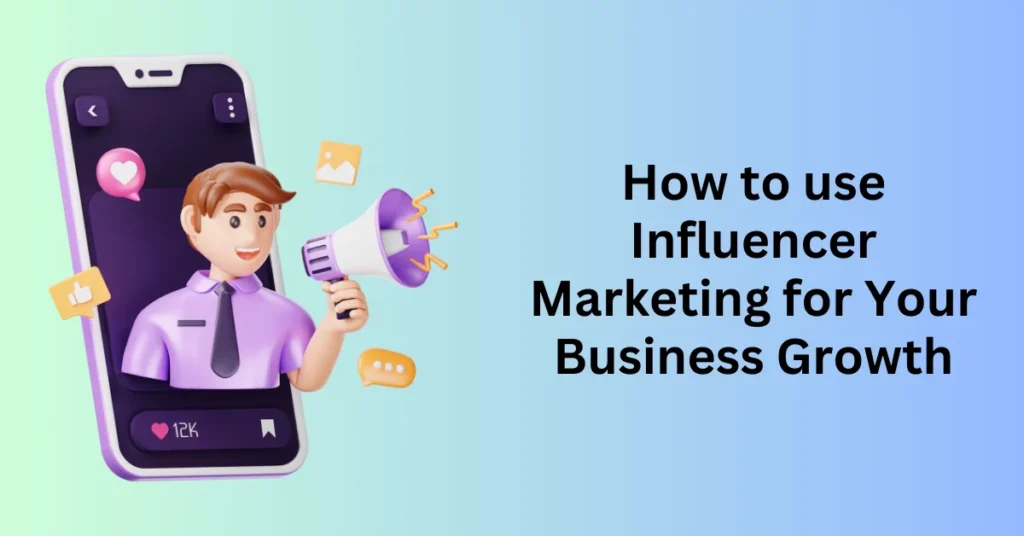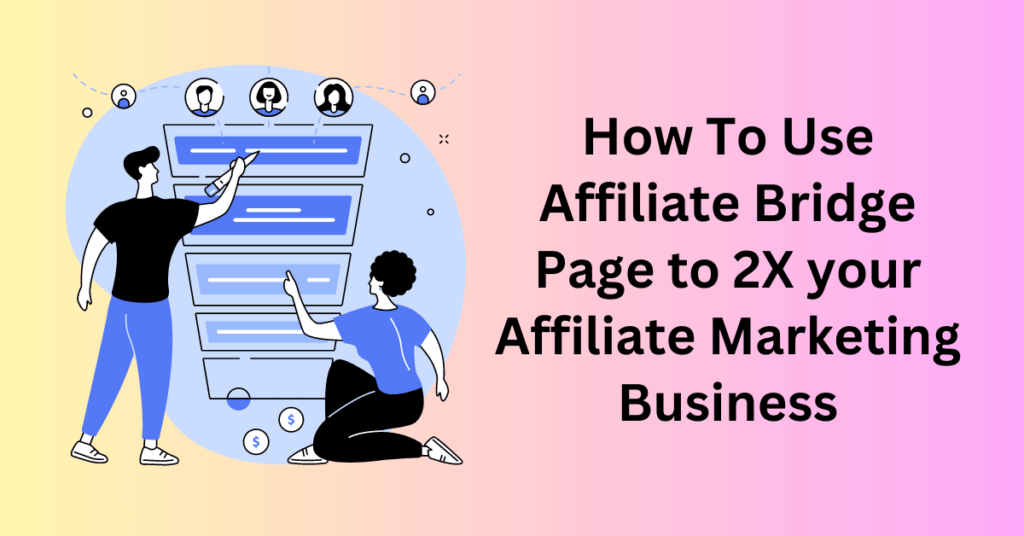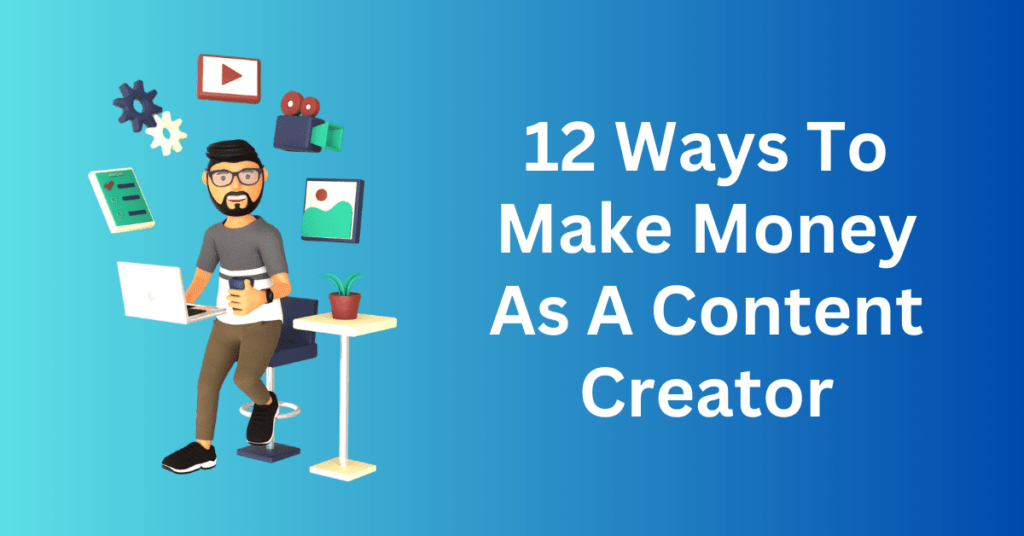The influencer marketing industry has exploded in recent years, growing from a $6.5 billion industry in 2019 to an estimated $24 billion in 2024. This surge reflects a major shift in consumer behaviour—people trust recommendations from individuals they follow online more than traditional advertisements.
While established brands have heavily invested in influencer marketing, many startups have yet to fully embrace this strategy, leaving massive growth potential untapped.
If you’re a startup founder looking to scale your brand efficiently, influencer partnerships can provide high-impact exposure, credibility, and customer acquisition at a fraction of the cost of traditional advertising.
In this guide, we’ll break down:
- What influencer marketing is and why it works
- How startups can leverage influencers for rapid growth
- Proven strategies to launch an influencer campaign on a budget
What Is an Influencer?
In today’s digital landscape, the term “influencer” often brings to mind high-profile celebrities and social media personalities, who command millions of followers on Instagram. While these figures undoubtedly hold significant sway, the definition of an influencer extends far beyond just mainstream celebrity culture.
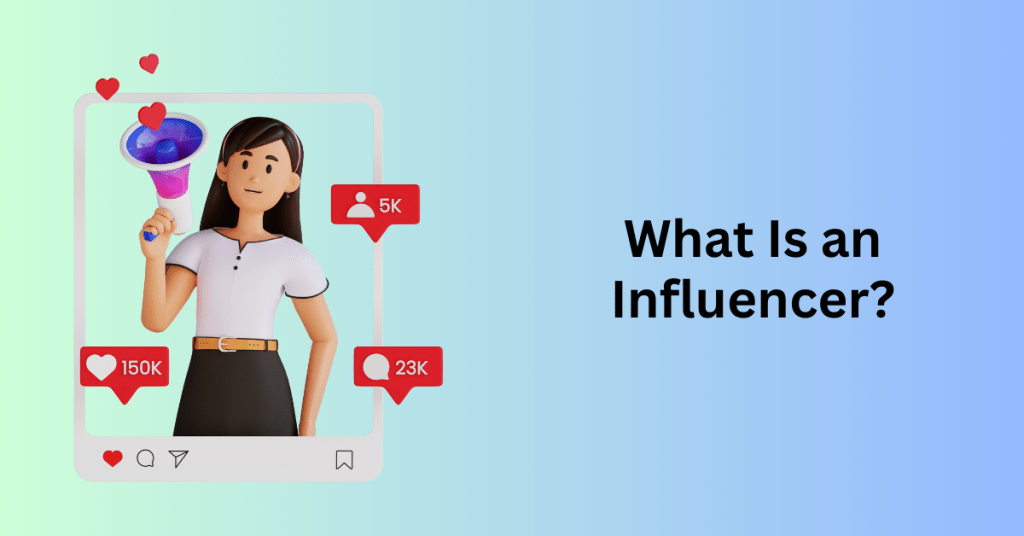
At its core, an influencer is someone who has built a loyal online following based on trust, expertise, and relatability. Their audience values their opinions, whether it’s about fashion, business strategies, fitness routines, or personal development. Unlike traditional advertising, influencer marketing thrives on authenticity, as people are more likely to trust recommendations from individuals they admire rather than from brands directly.
Influencers exist across various platforms and niches. They don’t need millions of followers to be effective—many micro-influencers (10K–100K followers) and nano-influencers (under 10K followers) have highly engaged communities.
What Is Influencer Marketing? A Guide to Leveraging Digital Influence
In today’s digital economy, influencer marketing has become one of the most effective ways for brands to connect with their target audiences. Instead of relying solely on traditional advertising, businesses collaborate with trusted influencers—content creators, social media personalities, and industry experts—to promote their products and services.
By tapping into an influencer’s engaged audience, brands gain credibility, increase brand awareness, and drive conversions in a more authentic and relatable manner. Consumers are far more likely to trust recommendations from individuals they admire than direct promotions from companies.
How Do Brands Compensate Influencers?
Compensation is a critical factor in influencer marketing, as influencers are professional content creators who invest time and effort into producing high-quality promotional material. Brands typically compensate influencers in five main ways:
- Discounts on Products or Services – Offering influencers exclusive discounts they can use personally or share with their audience.
- Free Products or Services – Providing complimentary products in exchange for a review or endorsement.
- Monetary Payments – Paying influencers directly for their promotional efforts.
- Giveaways – Partnering with influencers to run contests that engage their audience.
- Equity in the Business – Granting influencers a stake in the company, though this is rare and usually reserved for long-term partnerships.
While free products were a common form of payment in the early 2020s, the industry has evolved. According to the State of Influencer Marketing 2025 report, 40.8% of brands now offer direct monetary compensation—a clear sign that influencer marketing is maturing.
Rather than relying on product-based compensation, businesses that pay influencers upfront tend to secure stronger, more professional partnerships. Influencers, like any other professionals, need to earn a living, and brands that recognize this will have a competitive edge in attracting top-tier creators.
If you’re serious about using influencer marketing to grow your brand, it’s best to skip low-value offers like discounts, free products, and giveaways. Instead, prioritize monetary compensation from the start.
- Attract High-Quality Influencers – Experienced influencers are more likely to collaborate when they see the value in the partnership.
- Build Long-Term Relationships – Paying fairly fosters trust and encourages repeat collaborations.
- Ensure Quality Content – When influencers feel valued, they put more effort into producing engaging, high-converting content.
Influencer marketing isn’t just about getting exposure—it’s about building genuine relationships with content creators who can authentically promote your brand. By offering competitive compensation, you’ll establish lasting partnerships that drive real business results.
The Pros and Cons of Influencer Marketing
Influencer marketing has become a cornerstone of modern digital advertising, offering brands a way to tap into highly engaged audiences through trusted personalities. By leveraging an influencer’s credibility, businesses—especially startups—can rapidly gain exposure, build brand awareness, and generate leads.
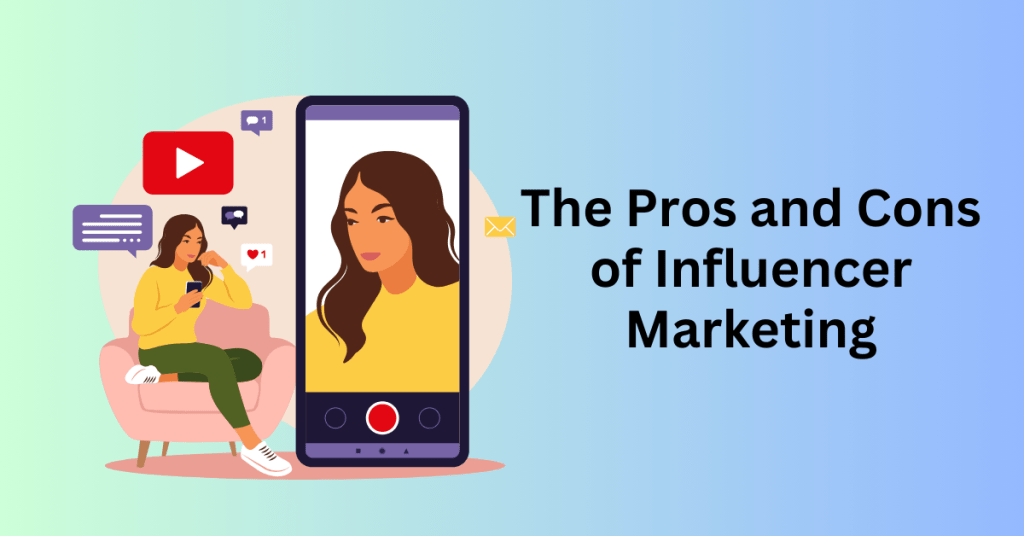
However, while influencer marketing offers significant advantages, it’s not without its challenges. From reputational risks to declining trust, brands must carefully weigh the pros and cons before diving into this strategy. Let’s explore the benefits and drawbacks of influencer marketing and how you can make informed decisions to maximize your marketing ROI.
The Pros of Influencer Marketing
1. Access to Highly Targeted Audiences
One of the biggest advantages of influencer marketing is the ability to reach specific demographics that may be difficult to access through traditional advertising. Influencers have cultivated niche audiences that trust their opinions, allowing brands to target potential customers with precision.
2. Enhanced Brand Credibility and Trust
Consumers tend to trust recommendations from people they admire more than traditional ads. When an influencer endorses a product, their audience perceives it as a personal recommendation rather than just another paid advertisement, making them more likely to take action.
3. Cost-Effective Compared to Traditional Advertising
Depending on the influencer’s reach and engagement, influencer marketing can be more cost-effective than running large-scale paid advertising campaigns. Micro-influencers (those with 10,000–100,000 followers) often provide better engagement rates at lower costs compared to celebrity endorsements.
4. Boosts SEO and Social Proof
Influencer collaborations can generate backlinks, increase website traffic, and improve your brand’s online presence. Additionally, social proof in the form of reviews, unboxings, and testimonials can enhance your brand’s credibility in the eyes of potential customers.
The Cons of Influencer Marketing
1. Reputational Risks and Brand Safety
One of the most significant risks of influencer marketing is associating with the wrong influencer. If an influencer becomes involved in a scandal or expresses controversial opinions, your brand could suffer from guilt by association.
To mitigate this, conduct thorough research before partnering with an influencer:
- Review their past content to ensure it aligns with your brand values.
- Monitor their social media behavior for any signs of impulsivity, controversy, or inflammatory remarks.
- Investigate their credibility by verifying claims about their background and experience.
Trust is everything in digital marketing, and partnering with an influencer who lacks integrity can quickly backfire.
2. Measuring ROI Can Be Challenging
Unlike direct-response marketing strategies where results are easy to track, influencer marketing can be more difficult to measure. While brands can assign unique discount codes or affiliate links to influencers, many consumers will visit a brand’s website directly rather than using tracked links.
To get a clearer picture of your influencer marketing success:
- Monitor increases in direct traffic and conversions during campaign periods.
- Analyze engagement metrics (likes, comments, shares) to gauge audience interest.
- Use UTM parameters to track influencer-driven traffic more accurately.
3. Declining Consumer Trust in Influencers
While influencers once had an unmatched ability to sway consumer decisions, trust in influencer marketing is waning. As audiences become more media-savvy, they recognize that many influencer endorsements are paid partnerships rather than genuine recommendations.
Several factors have contributed to this decline in trust:
- Overcommercialization: Many influencers promote multiple brands, making endorsements feel less authentic.
- Scandals and fraud: High-profile controversies, such as the FTX crypto debacle, have damaged consumer confidence.
- Increased skepticism among younger audiences: Gen Z, in particular, is more aware of influencer marketing tactics and is less likely to take endorsements at face value.
To counteract this, brands should prioritize working with authentic influencers who genuinely believe in their products rather than those who simply take the highest-paying sponsorship.
How to Design an Effective Influencer Marketing Campaign
Influencer marketing has become one of the most powerful ways to connect with your target audience, but a one-off collaboration won’t deliver lasting results. To create a campaign that drives engagement, builds trust, and converts leads into customers, you need a long-term, strategic approach.
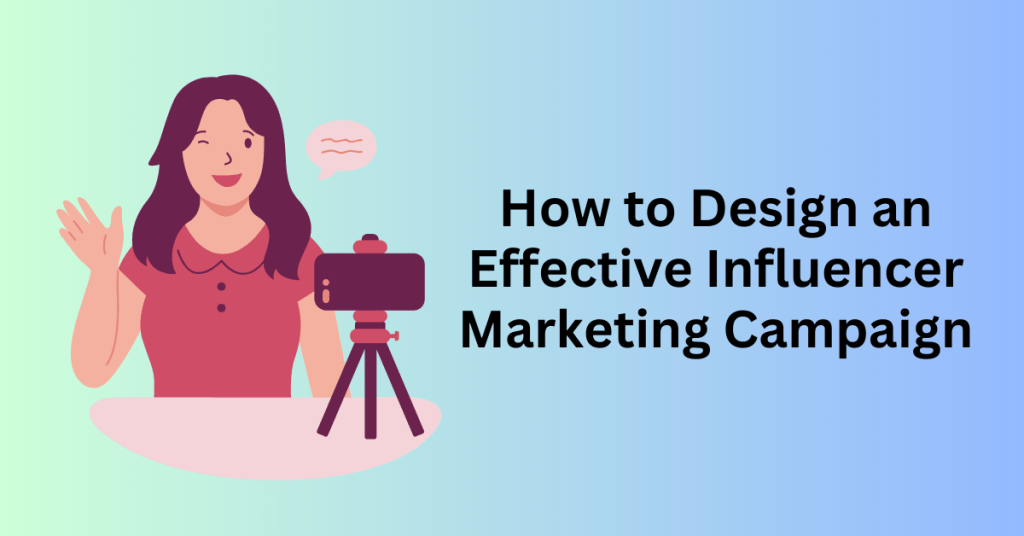
Here’s how to design an effective influencer marketing campaign that generates sustainable success.
1. Repeated Exposure
The digital world is more crowded than ever, making it difficult to capture and hold attention. Many brands make the mistake of expecting instant conversions from influencer marketing, but research suggests that multiple touchpoints are necessary before a consumer makes a purchase decision.
- Studies by Susanne Schmidt and Martin Einsend indicate that consumers need to see an ad about 10 times to maximize their response.
- Navdeep S. Sahni’s research suggests that spreading ad exposure over time is more effective than overwhelming potential customers with repeated promotions in a short timeframe.
Although these studies focus on traditional advertising, the same principles apply to influencer marketing. Instead of relying on a single post or a short-term collaboration, focus on consistent exposure over months by:
- Partnering with multiple influencers in the same niche who have overlapping audiences.
- Running long-term campaigns with influencers instead of one-time sponsorships.
- Leveraging multi-platform exposure (Instagram, YouTube, TikTok, and blogs) to reach potential customers in different ways.
Influencer marketing works best when brand familiarity grows over time, leading to trust, recognition, and ultimately, conversions.
2. Start With Nano and Micro-Influencer
Bigger isn’t always better when it comes to influencer marketing. While celebrity endorsements may seem appealing, data consistently shows that nano-influencers (1K–10K followers) and micro-influencers (10K–50K followers) drive higher engagement rates than macro-influencers and celebrities.
According to the 2024 State of Influencer Marketing Report, only 17% of brands prefer working with macro-influencers. Instead, businesses are prioritizing smaller, niche influencers with highly engaged followers.
The Ideal Influencer Progression for Maximum ROI
- Start with nano-influencers (1K–10K followers) – They have tight-knit communities and the highest engagement rates.
- Move up to micro-influencers (10K–50K followers) – They provide strong reach without losing engagement.
- Test rising influencers (50K–100K followers) – They offer scalability while maintaining relatability.
Avoid partnering with influencers with huge followings (100K+ followers) unless they have a highly targeted audience. The larger the audience, the more diluted their influence becomes, often resulting in a lower ROI.
3. Build a Sales Funnel to Convert Leads Into Customers
Getting your product in front of an audience is just the first step—you need a system in place to turn that attention into sales. A well-designed sales funnel is essential for maximizing conversions from influencer-driven traffic.
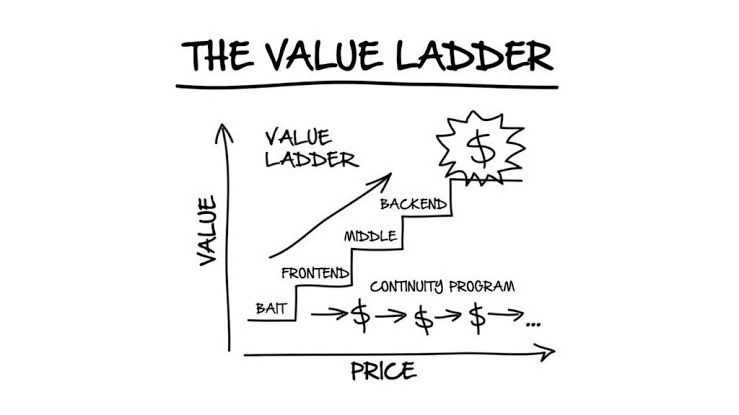
The Value Ladder Sales Funnel is one of the most effective models for influencer marketing:
- Step 1: Offer a Lead Magnet – Give away a free, valuable resource (e.g., an ebook, discount, checklist) in exchange for an email address.
- Step 2: Present a Low-Cost Frontend Offer – Introduce an entry-level product or service that’s easy for new customers to purchase.
- Step 3: Upsell Higher-Tier Offers – As trust grows, offer premium products or services with more value.
- Step 4: Create Repeat Customers – Use email marketing and retargeting ads to nurture long-term relationships.
Most consumers aren’t ready to buy immediately, so pushing a product too soon can result in wasted influencer marketing dollars. Instead, use influencers to drive traffic to a lead magnet landing page and build an email list. Once you have their contact information, you can nurture leads and increase conversions over time.
4. Unique Tracking Link for Each Influencer
Measuring the success of influencer campaigns can be tricky, as many people don’t purchase immediately after seeing a recommendation. However, you can track influencer performance by assigning each influencer a unique tracking link to your lead magnet landing page.
How to Track and Optimize Your Campaign:
- Use UTM parameters in your links to track referral traffic.
- Monitor direct traffic and conversion spikes after influencer promotions.
- Compare engagement rates (click-throughs, sign-ups, and purchases) from different influencers.
- A/B test different influencers and campaign messaging to optimize performance.
While tracking 100% of influencer-driven traffic is impossible, these methods provide valuable insights into which partnerships are delivering the highest ROI.
5. Focus on Long-Term Relationships
The most successful brands don’t treat influencer marketing as a one-time promotional tool—they build lasting relationships with influencers in their niche.
Why? Trust grows over time. If a consumer sees an influencer promoting a brand repeatedly, they become more likely to view the brand as credible.
How to Build Strong Influencer Partnerships:
- Offer fair compensation and respect influencers’ creative freedom.
- Provide long-term collaborations instead of one-off sponsorships.
- Support influencers with exclusive perks, affiliate commissions, and bonuses.
- Align with influencers whose values and audience match your brand’s mission.
Remember, influencer marketing isn’t just about short-term sales—it’s about creating a trusted brand presence that resonates with your audience.
Start Building Your Lead Funnel Today with 14-day Free Trial
3 Powerful Lead Generation Funnel Templates for Influencer Marketing
In the world of influencer marketing, capturing and nurturing leads is essential for converting engaged followers into loyal customers. A well-structured lead generation funnel guides potential buyers through the early stages of their journey, providing value while strategically positioning your products or services as the solution to their needs.
Here are three proven lead-generation funnel templates tailored for influencer marketing.
1. The Lead Magnet Funnel
A lead magnet funnel is a highly effective way to capture contact information by offering a valuable freebie in exchange for an email address. This strategy works exceptionally well in influencer marketing, as audiences already trust and engage with the influencer’s recommendations.
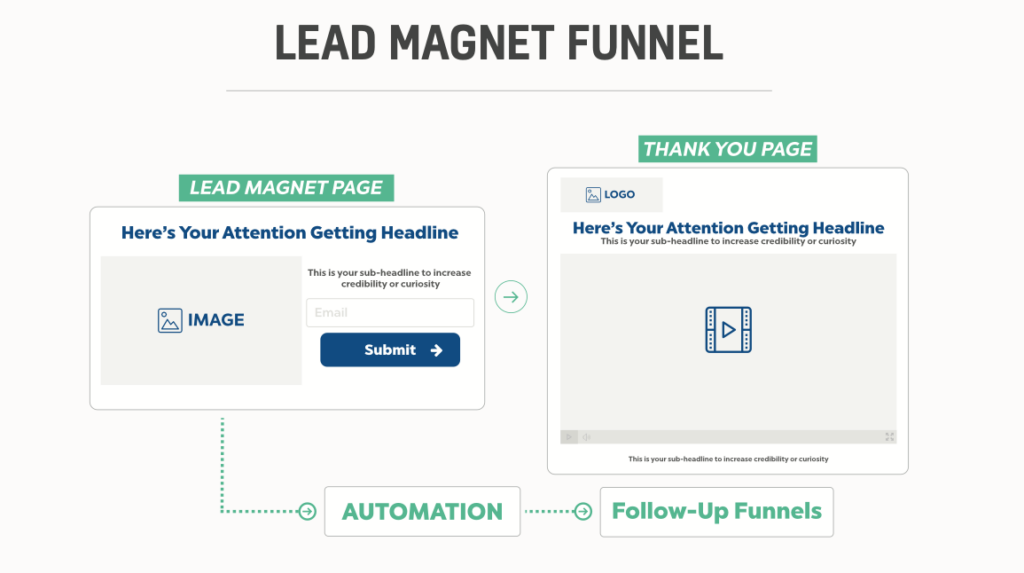
How It Works:
This funnel consists of two key pages:
- Lead Magnet Landing Page – This is where visitors are introduced to the free resource and prompted to enter their email to access it.
- Thank You Page – After signing up, users receive a confirmation message and access to their free offer, along with a next step (e.g., joining a community, following on social media, or checking out a related product).
Best Lead Magnet Ideas for Influencer Marketing:
Depending on your niche, your lead magnet could be:
- A free eBook or checklist (e.g., “10 Must-Have Skincare Ingredients for Glowing Skin”)
- A video masterclass (e.g., “How to Monetize Instagram as a Micro-Influencer”)
- A free template or resource (e.g., “Social Media Content Calendar for Busy Entrepreneurs”)
- A free trial or sample (ideal for software, subscription services, or digital tools)
Why It Works:
By offering a high-value, problem-solving resource, you build credibility and trust while growing your email list. Once leads are inside your ecosystem, you can nurture them with targeted content and offers.
Start Building Your Lead Funnel Today with 14-day Free Trial
2. The Webinar Funnel:
A webinar funnel is perfect for influencers and brands looking to engage audiences at a deeper level. Webinars provide an opportunity to educate, inspire, and make a compelling offer, leading to higher conversions.
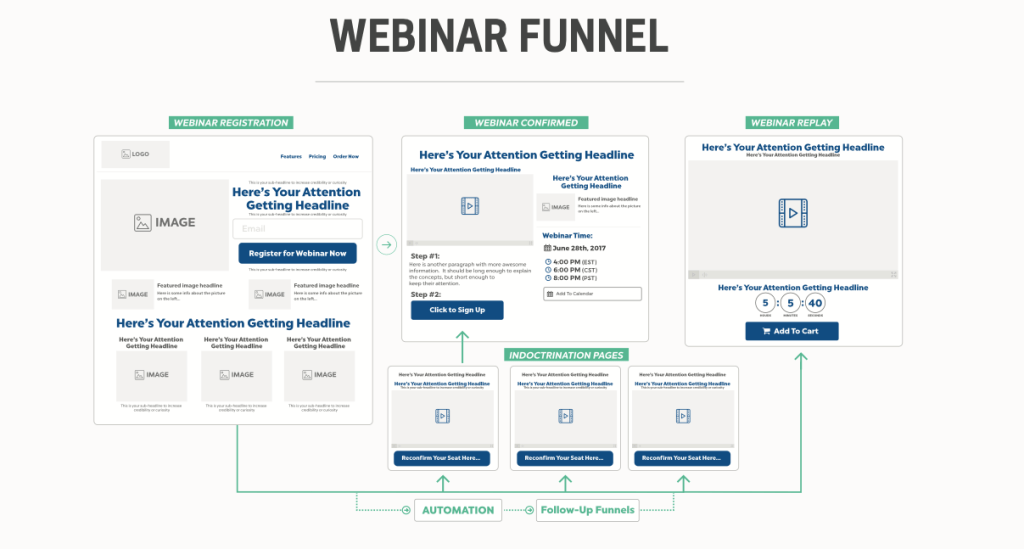
How It Works:
This funnel consists of three main pages:
- Webinar Registration Page – A dedicated page where potential attendees sign up for your free training or live event.
- Confirmation Page – Confirms registration and provides event details while setting expectations.
- Webinar Event Page – The page where attendees join the live or replay version of the webinar.
Webinar Structure for Maximum Conversions:
- 45 minutes of value-packed education – Teach something actionable that aligns with your product or service.
- 15-minute sales pitch – Introduce your offer, highlight benefits, and address objections.
- Clear Call-to-Action (CTA) – Guide attendees to the next step, whether it’s purchasing, signing up for a free trial, or booking a consultation.
Pro Tip:
Creating urgency and scarcity can significantly boost attendance and conversions. Consider offering a limited-time replay (available for only 24 hours) or a fast-action bonus for those who buy within a specific timeframe.
Start Building Your Lead Funnel Today with 14-day Free Trial
3. The Newsletter Funnel
A newsletter funnel is a fantastic way to continuously engage potential customers over time, keeping your brand top of mind and priming leads for future sales.
How It Works:
This funnel consists of two essential pages:
- Newsletter Sign-Up Page – Highlights what subscribers can expect (e.g., expert insights, exclusive deals, behind-the-scenes content).
- Thank You Page – Confirms the subscription and informs new subscribers about upcoming content.
How to Structure an Engaging Newsletter:
- Consistent Format – Create a recognizable style, like a “5-Minute Friday” tips newsletter.
- Bite-Sized, Skimmable Content – People skim emails, so keep it structured and easy to digest.
- Strategic Promotion – Use subtle product placements in the P.S. section or a banner at the bottom.
Why It Works:
A well-crafted newsletter builds authority, trust, and engagement over time. Unlike social media algorithms, email marketing gives you full control over audience reach, making it a powerful asset for monetization.
Each of these lead-generation funnels serves a unique purpose in influencer marketing. Whether you’re offering a free resource (Lead Magnet Funnel), hosting a high-converting webinar (Webinar Funnel), or nurturing long-term relationships (Newsletter Funnel), implementing these strategies will help turn followers into leads—and leads into loyal customers.
What to Do After Capturing a Lead
Once a potential customer has provided their email address, your next step is nurturing the relationship and guiding them toward a purchase. The best way to do this is through an automated welcome email sequence that introduces your brand, delivers value, and builds trust.
Why a Welcome Email Sequence is Crucial
- Sets expectations – Helps subscribers understand what kind of content they’ll receive.
- Builds rapport – Establish a connection between your brand and the subscriber.
- Increases engagement – Encourages leads to open future emails and interact with your content.
- Prepares them for an offer – Warms up subscribers so they’re ready to take the next step.
The 6-Part Welcome Email Sequence
Here’s a tried-and-tested six-email sequence you can customize based on the lead generation funnel you’re using.
Email #1 – The Warm Welcome
- Subject line: “Welcome! Here’s what to expect from us”
- Goal: Thank the subscriber, introduce your brand, and set expectations.
- Content:
- Express gratitude for signing up.
- Reinforce what they’ll receive (e.g., a lead magnet, webinar confirmation, or newsletter insights).
- Let them know when to expect your next email.
Example CTA: “Highlight this email so you never miss an update.”
Email #2 – Your Brand Story & Mission
- Subject line: “Why We Started [Your Brand Name]”
- Goal: Build trust by sharing your journey and mission.
- Content:
- A brief, authentic story about why you started your business.
- A relatable struggle your audience faces (and how your product/service helps).
- A friendly, conversational tone to create a personal connection.
Example CTA: “Reply and tell us about your biggest challenge!”
Email #3 – Provide Instant Value
- Subject line: “Your [Lead Magnet/Webinar] & a Bonus Tip”
- Goal: Deliver valuable insights that help your audience solve a small problem.
- Content:
- Provide a quick win (e.g., a strategy, checklist, or insight).
- Position yourself as a trusted expert in your niche.
- Subtly introduce how your product/service can enhance this solution.
Example CTA: “Want to go deeper? Here’s how we can help.”
Email #4 – Social Proof & Success Stories
- Subject line: “See How [Customer Name] Transformed Their [Problem]”
- Goal: Build credibility by showcasing results from real customers.
- Content:
- Share testimonials, case studies, or before-and-after results.
- Address objections by demonstrating proof of success.
- Keep it relatable—make the reader see themselves in the success story.
Example CTA: “Curious about how this could work for you? Check out [Product/Service].”
Email #5 – Overcome Common Objections
- Subject line: “Still on the fence? Let’s clear things up”
- Goal: Address concerns and reinforce why your offer is the best solution.
- Content:
- Tackle common hesitations (e.g., price, time commitment, effectiveness).
- Provide a guarantee, risk-free trial, or refund policy.
- Emphasize why NOW is the best time to take action.
Example CTA: “We’re here to answer any questions—just hit reply!”
Email #6 – The Call to Action (Optional)
- Subject line: “Let’s Take the Next Step”
- Goal: Encourage the subscriber to take action, whether that’s signing up for a free trial, booking a consultation, or making a purchase.
- Content:
- Recap the value they’ve received so far.
- Present your offer as the logical next step.
- Include a limited-time incentive (e.g., bonus, discount, or urgency-based offer).
Example CTA: “Claim your spot before [deadline]!”
Final Thoughts: How to Use Influencer Marketing for Your Business Growth
In conclusion, influencer partnerships are a powerful tool for accelerating startup growth, offering access to wider audiences, enhanced credibility, and more authentic brand engagement. By selecting influencers whose values align with your business, fostering genuine relationships, and measuring the effectiveness of your collaborations, you can create a scalable marketing strategy that drives long-term success.
As the digital landscape evolves, leveraging influencers effectively can be a game-changer in building a brand that resonates with your target market and stands out in a crowded space.
Start Building Your Lead Funnel Today with 14-day Free Trial
